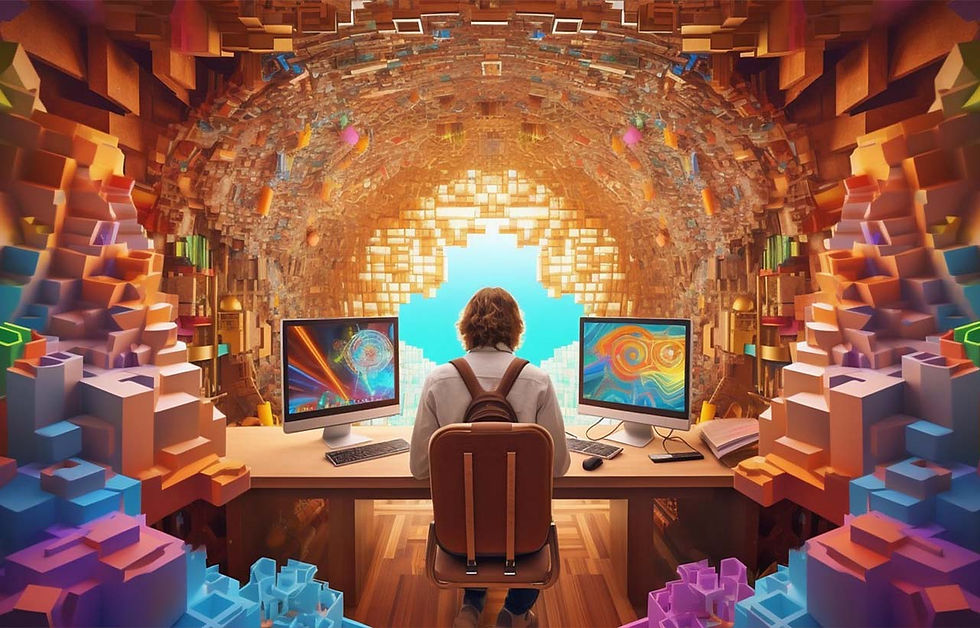From Tools to Technique: 5 Tips Every Digital Artist Should Know
- Ankit Garg

- Oct 7
- 3 min read

Digital art has opened up measureless possibilities for artists, and the eventuality to make intricate pieces of art without any physical medium constraints. Whether you're new to drawing on tablets or are familiar with digital mediums, enriching your process can help take your art to an advanced level. By giving heed to some techniques, you can ameliorate not only your skill but also your workflow.
Here are five precious tips to allow you to produce more advanced and charming digital artwork:
1. Master the Basics of Composition and Color
Before probing into advanced digital art styles, it's essential to understand composition and color proposition. An even composition captures the viewers’ attention while emphasizing the subject effectively. Timeless principles such as the rule of thirds, harmony, and negative space are still relevant in both digital and traditional media.
Additionally, learning to use complementary and analogous colors can help you evoke depth and harmony in your artwork. Explore contrast, saturation, and lighting to create mood and tone. A solid knowledge of these aspects will engage a viewer with your artwork and guarantee intent is communicated.
2. Experiment with Different Styles
One of the greatest strengths of digital art is the degree of flexibility. You can try the different styles without having to commit to any permanent changes, so the exploration feels less risky. For example, exploring abstract form, expressionist texture, or photorealistic detail can challenge you as a visual artist.
Portrait painting, for instance, challenges you to express likeness and emotion, while stylized or inflated character design gives you the freedom to get creative in bold strokes. By experimenting regularly, you will discover what works best with your artistic voice and make yourself more proficient in different styles. Each trial helps you to exercise your chops and keep your portfolio from stagnating.
3. Invest in the Right Tools
The quality of your digital artwork starts with the digital tools you use. A quality drawing tablet that gives you great pressure sensitivity produces more precise lines and better quality, and a stylus that has several customizable options makes the drawing feel more natural. The software itself is also an important consideration. Programs like Procreate, Adobe Photoshop, and Clip Studio Paint continue to have different unique features, from extensive layers to various blending modes.
You can enhance your toolkit further by purchasing unique Procreate brushes that mimic the feel of real-world mediums such as ink, pastels, and various other textures. When you invest in tools that suit your style, you produce a comfortable space that encourages consistency and growth.
4. Embrace Layer Management and Workflow Efficiency
Software for computer art creates complicated layers, an advantage of digital over analog media. Layers will grant you effects like linework, shading, and highlights without being on the same layer, giving you more freedom when editing. By consistent organization (saving layers and grouping them), your document can feel less overwhelming, saving precious time when revisiting past projects.
Adjustment layers can also improve your workflow efficiency, so you can apply color or light changes without physically changing the original artwork. Though many of the features a program has may seem superfluous, paths and layer organization can simplify your course of working and potentially frustrate informed revisions and follow-through.
5. Seek Feedback and Continue Learning
Growth as an artist depends on harmonious practice and formative review. Sharing your work with peers, instructors, or online forums enables you to identify strengths and weaknesses. Constructive criticism, if positively received, can upgrade techniques and present new concepts.
Online courses, tutorials, and art challenges can likewise expose you to new skills and push you to work outside of your limits. Remember that digital art, like any skill, improves with nonstop literacy and practice. By keeping yourself open to feedback and embracing lifelong development, you set yourself up for ongoing success.
In summary, the act of creating digital art is an evolving process built upon practice, experimentation, and a positive mindset. By following the advice mentioned above, you open yourself up to continuously improving the quality of your artworks. Each of these processes not only helps to refine individual technical skills but also develops your own artistic voice. Digital art is born of flexibility and imagination; so, whether you love the process or not, consider each piece of art a challenge with an opportunity to learn and grow.





























Comments